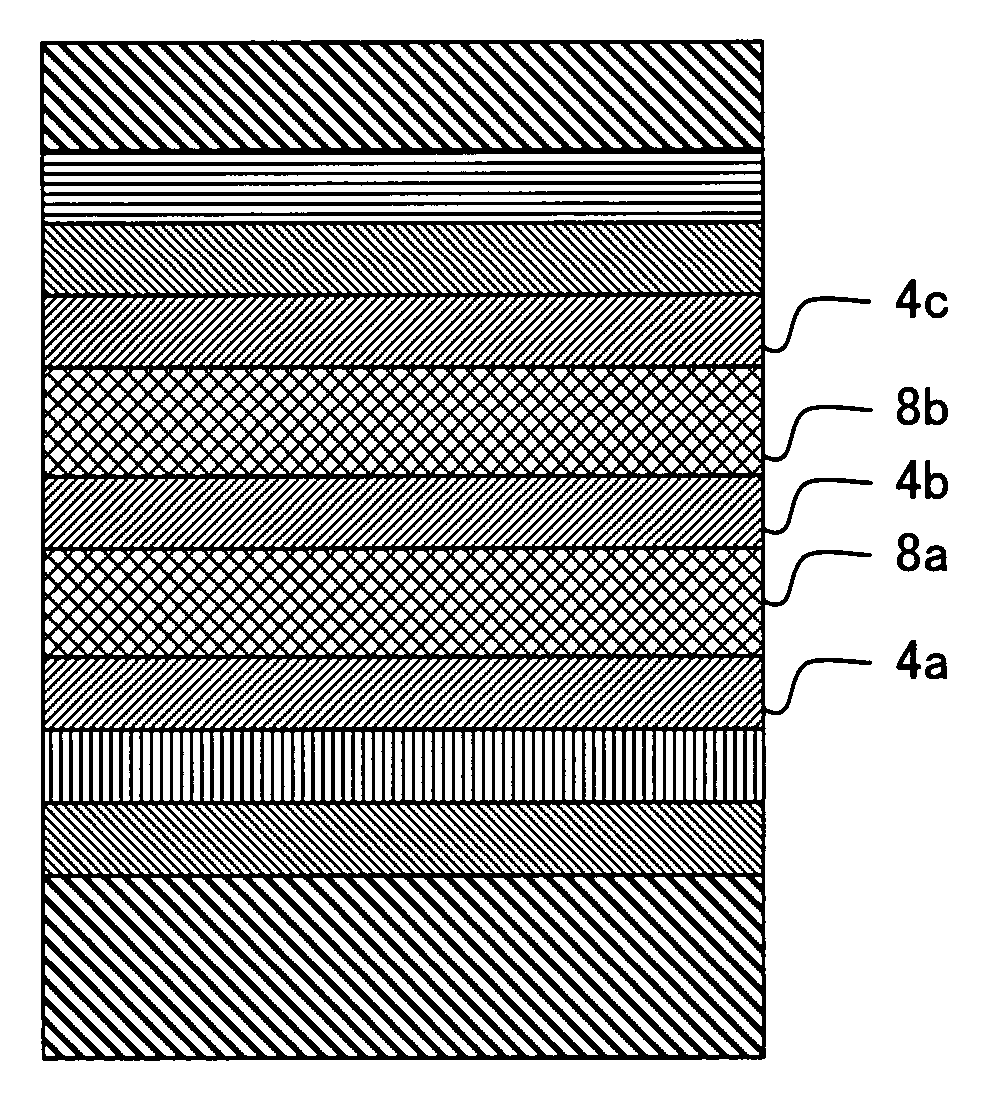Organic electroluminescence element
a technology of electroluminescence elements and organic materials, applied in the direction of discharge tubes/lamp details, discharge tubes luminescnet screens, organic semiconductor devices, etc., can solve the problems of increasing driving voltage, lowering brightness, and many problems for putting organic electroluminescence elements to practical use, so as to improve external quantum efficiency, improve durability, and reduce driving voltage
- Summary
- Abstract
- Description
- Claims
- Application Information
AI Technical Summary
Benefits of technology
Problems solved by technology
Method used
Image
Examples
example 1
1. Preparation of Organic EL Element
[0196](Preparation of Comparative Organic EL Element No. A)
[0197]A 2.5 cm square ITO glass substrate having a 0.5 mm thickness (manufactured by Geomatec Co., Ltd.; surface resistance: 10 Ω / □) was placed in a washing container to apply ultrasonic cleaning in 2-propanol, and then, UV-ozone treatment was applied for 30 minutes. On this transparent anode, the following layers were deposited in accordance with a vacuum deposition method. In the examples of the present invention, a deposition rate was 0.2 nm / second, unless otherwise specified, wherein the deposition rate was measured by the use of a quartz oscillator. The thicknesses of layers described below were also measured by using the quartz oscillator.
[0198]—Hole Injection Layer—
[0199]On the ITO layer, CuPc was deposited by the evaporation method at a thickness of 10 nm.
[0200]—Hole Transport Layer—
[0201]On the hole injection layer, α-NPD was deposited by the evaporation method at a thickness of 3...
example 2
1. Preparation of Organic EL Element
[0220](Preparation of Comparative Organic EL Element No. C)
[0221]A comparative organic EL element No. C was manufactured in the same manner as the comparative organic EL element No. A except for changing the light emitting layer to the following composition.
[0222]Light emitting layer: mCP and Ir(ppy)3 were co-deposited at a volume ratio of 95:5. The thickness of the light emitting layer was 140 nm.
(Preparation of Comparative Organic EL Element No. D)
[0223]In the process of preparing the comparative organic EL device No. C, the light emitting layer was divided into the following four unit light emitting layers, and the following intermediate layers 11 to 13 were disposed between the respective unit light emitting layers. In order from the hole transport layer, the respective unit light emitting layer 11 / intermediate layer 13 / unit light emitting layer 12 / intermediate layer 12 / unit light emitting layer 13 / intermediate layer 11 / unit light emitting lay...
PUM
 Login to View More
Login to View More Abstract
Description
Claims
Application Information
 Login to View More
Login to View More - R&D
- Intellectual Property
- Life Sciences
- Materials
- Tech Scout
- Unparalleled Data Quality
- Higher Quality Content
- 60% Fewer Hallucinations
Browse by: Latest US Patents, China's latest patents, Technical Efficacy Thesaurus, Application Domain, Technology Topic, Popular Technical Reports.
© 2025 PatSnap. All rights reserved.Legal|Privacy policy|Modern Slavery Act Transparency Statement|Sitemap|About US| Contact US: help@patsnap.com



